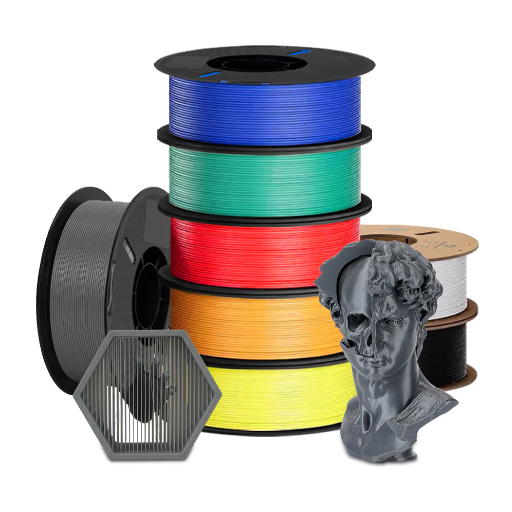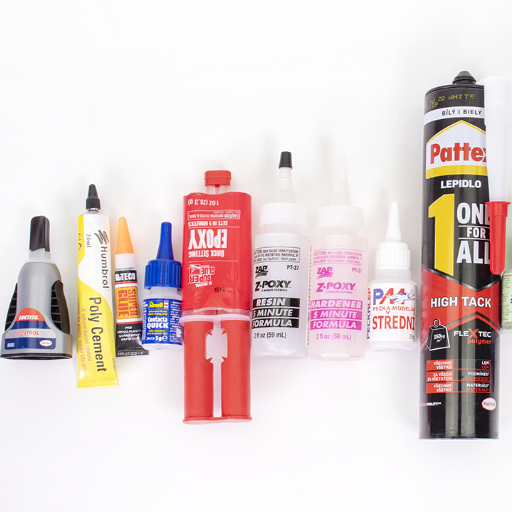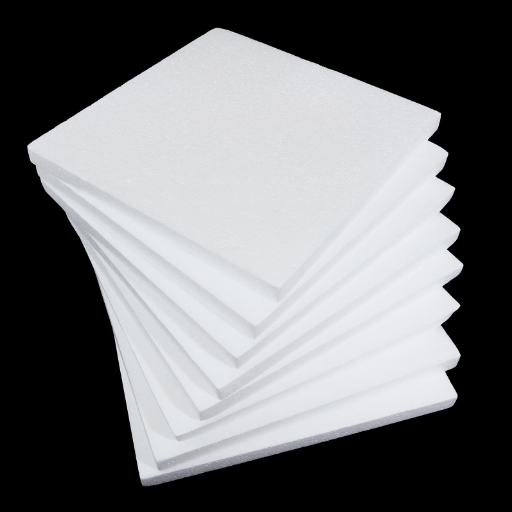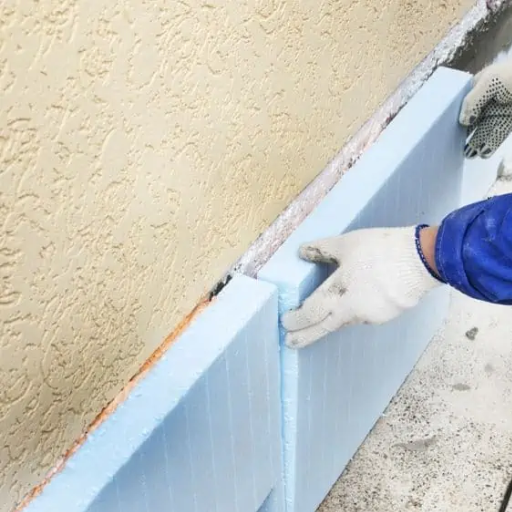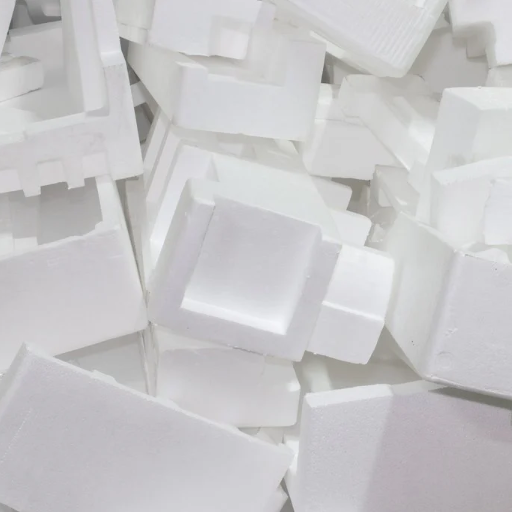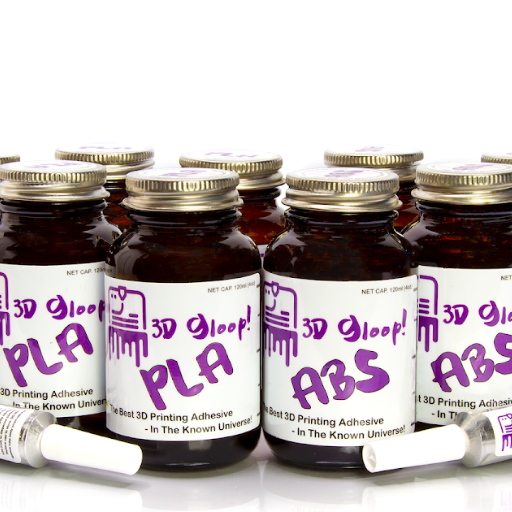The choice of adhesive is crucial in ensuring the completion and longevity of a project whether in household repairs, crafting, or in professional environments. Two leading contenders in the realm of instant adhesives are Loctite Super Glue Liquid and Gorilla Super Glue. Both are household names because of their powerful bonding abilities, multi-purpose uses, and fast curing times, but are they truly as unmatched as they sound?
Whether you are a professional tradesperson or a DIY enthusiast, this comparison will help you determine which glue best suits your needs. By the end of this guide, you will know the differences and be better equipped to make an informed decision based on your needs. In this article, we make a side-by-side comparison of the two most popular adhesives, by examining key factors like bonding strength, material compatibility, ease of application, and their durability in changing conditions.
What are the Key Differences Between Loctite and Gorilla Super Glue?

When comparing Loctite Super Glue Liquid and Gorilla Super Glue, several key differences emerge based on their specific properties and performance characteristics:
- Bonding Strength
Loctite excels in precision bonding and is specifically designed for smaller surfaces, offering high tensile strength. Gorilla Super Glue, on the other hand, is known for its extra-strong bond on larger surfaces and is slightly less brittle over time.
- Material Compatibility
Loctite performs exceptionally well on non-porous materials like metal, ceramic, and plastics. Gorilla Super Glue extends its compatibility to a wider range of surfaces, including wood and foam, due to its more flexible bonding formula.
- Curing Time
Loctite typically cures faster, with bonds forming in as little as 10–30 seconds, making it ideal for quick fixes. Gorilla Super Glue has a slightly slower curing time, often requiring about 30–60 seconds for optimal adhesion.
- Durability
Gorilla Super Glue is more resistant to impact and moisture, making it suitable for outdoor or high-stress environments. Loctite, while durable, is best suited for indoor projects and controlled environments due to its brittle nature under extreme stress.
- Application
Loctite comes with an applicator optimized for precision tasks, such as repairing small components. Gorilla Super Glue typically features a thicker formula, making it easier for general usage and filling gaps.
Both adhesives have their respective strengths, and the choice ultimately depends on the demands of your specific project.
Performance on Different Surfaces
Loctite Super Glue Liquid creates dependable bonding on a range of different surfaces due to its unique formulation. It is particularly effective on non-porous surfaces such as metals, glass, and plastics where it develops a strong bond. Loctite Super Glue Liquid also works well on wood and leather, but those surfaces require more time and proper surface preparation such as cleaning and drying. However, unless used with a special primer, Loctite is not recommended for polyethylene and polypropylene plastics. Smooth surfaces allow for fast curing times which makes Loctite a go-to option for fine repairs and other small projects.
What Makes Gorilla Super Glue Unique?
The key Gorilla Super Glue features that set it apart from the competition are its rubber-infused formula, which enhances impact resistance and strength for use on demanding applications, and its long curing time, which is 45 seconds, for repositioning the bond before initial contact. Unlike many superglues, this slower curing feature is particularly useful for precise or complex repairs. Moreover, the Super Glue can bond wood, metal, plastic, ceramic, and many other materials. Furthermore, the patented anti-clog cap keeps the glue fresh and prevents it from drying out between uses. This flexibility, strength, and user-friendly application makes Gorilla Super Glue stand out among competitors enabling the advanced consumer to quickly and accurately approximate a wide range of repair and crafting tasks.
Does Brand Impact the Adhesive Strength?
Indeed the brand’s adhesive strength will vary owing to factors like the formulations used, quality checks, and their intended purpose. Well-known brands invest considerably in new formulations to achieve high adhesion, superior durability, and resistance to moisture or temperature extremes. For example, Gorilla Glue, Loctite, and 3M are reputable brands that focus on producing durable adhesives that bond consistently across many materials. Generic or less-known brands usually do not invest as much in testing and optimizing their products which can lead to unpredictable adhesion. Always consider the scope of the project when selecting an adhesive, because even well-known brands have subpar performance on certain substrates and conditions.
How Do Loctite and Gorilla Glues Handle Plastic and Other Materials?

Both Loctite and Gorilla glue offer great utility, but effectiveness is material-dependent. Loctite products, particularly epoxies and superglues, bond to plastics exceptionally well because of their precision applicators and chemical compatibilities with rigid and flexible plastic. While Gorilla Glue is efficient with polyurethane and cyanoacrylate adhesives, plastics also pose a challenge because surface preparations, such as light sanding, are sometimes necessary for best adhesion. Both brands bond well with other materials such as wood, metal, ceramics, and fabric, but provide their unique advantages: Gorilla Glue excels as a gap filler, while Loctite is often favored for intricate and smaller-scale projects. In the end, these materials should be selected according to the material restoration and replacement, environment, and the needs of the job.
Can These Glues Bond Plastic Surfaces Effectively?
Loctite and Gorilla Glue are both able to bond to plastic surfaces, but more attention needs to be paid to the grade of plastic, as well as the type of adhesive. Loctite superglues, particularly the “Plastics Bonding” and epoxy ones, are tailored for hard-to-bond plastics like polypropylene and polyethylene, which are usually assisted with a primer for stronger bonding. Gorilla Glue cyanoacrylate products have good adhesion to plastics, but do best on uncontaminated, lightly abraded surfaces and much less so on low-energy polyethylene. Both glues work well, but for accurate work, Loctite is preferred, while gap-filling and water-resistant work is done better with Gorilla Glue. Always make sure the criteria of the particular type of plastic are followed for optimal results.
Are These Glues Suitable for Ceramics and Vinyl?
Loctite’s and Gorilla Glue’s application on ceramics and vinyl surfaces is possible, however, it has to be done carefully. Loctite superglues and epoxies on ceramics do work well as long as the pair to be glued are clean and dry, in which case, these glues will perform exceptionally well. Gorilla Glue, and in particular its polyurethane-based formulation provides good bonds in water-resistant gap-filling applications such as outdoors or on irregularly shaped surfaces.
When gluing vinyl, adhesive choice is critical; the adhesive must be flexible and constructed for non-porous surfaces. Loctite Vinyl, Fabric & Plastic Adhesive work superbly in bonding vinyl because of the seal’s strong flexibility. Although versatile, Gorilla Glue is less effective due to its rigid bond lines, however, small fixes that do not require flexibility can be repaired using the cyanoacrylate line of products. It is important to check product specifications to ensure the suitability and compatibility of the material.
What About Porous and Non-Porous Surfaces?
For surfaces like wood, fabrics, or unglazed ceramics, adhesives that cleave deep and form an impactful bond are essential. Glues that expand, fill gaps, and create a firm bond such as Gorilla Glue are effective along with Polyurethane-based glues as they are also water resistant. For other porous materials like ceramics, Water-based glues easily like PVA are great options due to their seamless indoor durability.
Impermeable finishes made up of metal, plastic, glass, or glazed ceramics require Non-porous adhesives. Superglue is a Cyanoacrylate-based adhesive and is one of the best options for these components as it bonds quickly and does not require surface preparation. It breaks down solid dividers, allows for seamless structures, and has anti-UV features. Epoxies are among the best multipurpose options for non-porous surfaces as they are quite resistant to environmental factors and provide great strength. Make sure to always use a surface-ready product and clean both surfaces to improve bonds.
Which is the Best Glue for Repair Jobs?

Every repair task has its own best glue, this works in line with the materials used and the level of MRO (Maintenance, Repair, and Operations) available. For wood and ceramic, PVA and polyurethane-based glue works best because it provides strong bonding and is indoor friendly. Cyanoacrylate superglue is mostly used on metal, glass, and plastics as it is nonporous. It bonds quickly and is tough while epoxy glue is strong and long-lasting and has good environmental resistance. Choosing the right glue for a task is necessary to achieve effective results because every glue has different attributes.
Is Loctite Super Glue Liquid Ideal for Quick Fixes?
Loctite Super Glue Liquid achieves binding on multiple materials with china, metals, and even plastics. This glue provides high adhesion that will last for a long time; however, its effectiveness with flexible material is questionable. Super Glue is an ideal choice for smooth surfaces that are dry without any residue. Super Glue Liquid achieves bonding on various items at a quick time, plus its patented tip enables precise application. With all the aforementioned properties, it is easy to see how Super Glue is great for quick and precise repairs.
Does Gorilla Super Glue Offer Longer-Lasting Cure?
Gorilla Super Glue has a special formulation that makes it recommendable for use on different materials because it provides a strong and sturdy bond. Unlike traditional glues, Gorilla Super Glue has extended its cure period which makes it preferable. Such formulation combines rubber with other essential elements, hence providing additional impact resistance, alongside battling environmental wear out such as moisture, wear, and fluctuations of temperature. Furthermore, glue binds well to metal, wood, ceramic, rubber, and plastic albeit some of these surfaces require intensive surface treatment to achieve desired results. Best of all, Gorilla Super Glue cures in a record time range of 10 to 45 seconds and performs heavy-duty tasks. Gorilla Super Glue is a glue of choice for users who need quick fixes or seek a permanent bond on various unapparent surfaces. However, it is essential to note that Super Glue is less effective on bendable and stretchable materials since it is rigid after curing.
When is a Gel Formula More Beneficial?
When dealing with vertical or uneven surfaces, gell formulas come in handy because of their non-drip consistency. A precise application is ensured and there is quite an easy control over areas that are challenging to reach as well as where materials need to be aligned with extreme precision. Also, gel super glues, where a lot of precision and stability is required, super glues are the preferred choice. Besides all of this, gell formulas tend to provide enhanced gap-filling properties so that irregular or porous surfaces can be easily bonded. Furthermore, gel super glues tend to spread less which helps in avoiding mess, making applications easier on elaborate or sensitive parts.
Understanding the Cure Time and Dry Features of Each Glue

The drying and curing times differ greatly between glue types. For example, liquid superglue dries within seconds which makes liquid superglue ideal for quick repairs. But, because of the super-fast drying time, it can be difficult to reposition the bond. Luckily, gel superglue offers a solution. Gel super glue has a longer dry time which accounts for more adjustment opportunities. This additional time is incredibly helpful for more intricate configurations. As with liquid glues, gel superglue reaches full strength after curing. Unlike super glues, however, gel super glue is more sensitive to environmental conditions like humidity and temperature, directly affecting the overall drying and curing time.
How Fast Does Each Glue Dry?
The drying speed of glue depends on its type and the surrounding environmental conditions. Liquid superglue typically dries within 10-30 seconds under normal conditions, reaching an initial bond almost immediately. This quick reaction is due to the adhesive’s reliance on the presence of moisture to polymerize effectively. Gel super glue, on the other hand, dries slower, taking approximately 30 seconds to a few minutes to bond. While slower than liquid glue, this allows users to make slight adjustments before the adhesive sets. Both types generally require a full curing time of 24 hours to achieve maximum strength. Factors such as humidity, temperature, and the materials being bonded significantly influence these times. For optimal performance, follow the manufacturer’s recommendations for drying and curing times.
Do You Need Clamping for Optimal Results?
Not all glue types need clamping, but for some materials and kinds of adhesives, the bond strength and alignment greatly improve. Proper clamping when using wood glue is fundamental for forming tight joints, as well as for distributing adhesive evenly across the bonding surface. Super glue’s setting speed usually means no clamping is needed, however, applying light pressure during initial bonding may assist adhesion. Parts bonded with epoxy adhesives normally require clamping to enhance stability while the adhesive cures. Instructions for specific adhesives should always be followed since materials and types of glue used affect clamping.
Does Either Glue Dry Clear?
The glue’s clarity upon drying depends on its formulation. Many types of glue such as PVA (polyvinyl acetate) and super glue (cyanoacrylate) dry clear, which is advantageous in cases where the presence of opaque glue lines is unsightly. In contrast, epoxy adhesives may dry clear or opaque depending on the specific product, which means checking the manufacturer’s labeling is necessary. Wood glue often dries to a translucent yellow or natural tone akin to wood, although variants do exist that dry clear. If the goal is achieving transparency, then the best option is glue labeled as “‘clear-drying.”
Choosing a Super Glue: Factors to Consider

In selecting the most suitable superglue, it is of utmost importance to consider a few performance-related details. First and foremost, the material being glued is super glue compatible. While superglue works effortlessly with non-porous surfaces like metal, ceramic, and plastic, it may have difficulty with porous materials like fabric or unsealed wood. Another point to note is the curing time; the full strength of some formulations is reached within seconds, while others take far longer. Clear adherence is also critical; super glue is opaque and most kinds dry clear, which aids in the application of the adhesive where visibility is a concern. Finally, environmental conditions like temperature and moisture bear consideration because some cyanoacrylate formulations are made for extreme conditions and water resistance. Always secure the manufacturer’s documents to identify the best product for your situation.
How Important is the Nozzle Design for Application?
The nozzle design of super glue plays a crucial role in determining the precision, efficiency, and ease of application. A well-designed nozzle ensures controlled dispensing, enabling users to apply the adhesive accurately to small or intricate areas without waste or spillover. Nozzles with fine tips are particularly beneficial for detailed work, such as repairing fragile items or assembling small components. Additionally, a proper nozzle design can help prevent clogging by incorporating self-sealing mechanisms or caps, thereby extending the product’s usability. Manufacturers often recommend selecting a glue with an appropriate nozzle for the intended task, as it directly impacts the quality and reliability of the bond.
What Role Does the Formula Play in Your Decision?
The formula serves as an invaluable tool for analyzing a problem or data set in a particular organized manner thereby enabling better decision making. Standardization of central variables avoids mistakes and guarantees inclusiveness of all relevant aspects. This becomes essential in the presence of multifaceted problems. Ultimately, the formula provides a solid basis for measuring success when options are evaluated and strategies are created.
Are Water-Resistant Properties Necessary?
The need for water resistance features varies depending on how a product will be used and the environment it will be subjected to. Water-resistant features are important for electronics like smartwatches and smartphones as these help in averting disasters from accidental water spills or humid conditions. Similarly, outdoor equipment like jackets, backpacks, and even shoes heavily rely on water resistance features to endure the wear and tear of rain. On the other hand, items like furniture and electronics which are unlikely to encounter water, are not necessarily required to have these traits. Their addition might even impose unnecessary costs on the production. At the end of the day, it comes down to one’s required specific usage of the product and what the environmental factors are.
References
Frequently Asked Questions (FAQ)
Q: What are the main differences between Loctite Super Glue Liquid and Gorilla Super Glue?
A: Both Loctite Super Glue Liquid and Gorilla Super Glue are popular brands of glue, but they have distinct differences. Loctite Ultra Gel is known for its flexibility and shock resistance, making it ideal for bonding porous surfaces. Gorilla Glue’s super glue gel is known for its strong bond and quick set time, making it a versatile all-purpose adhesive.
Q: How do Loctite and Gorilla superglues perform on different materials?
A: Both glue products adhere well to a variety of different materials, but certain factors depend on the material. Loctite is often preferred for metal and other hard surfaces due to its strong bond between metal. Gorilla super glue works well on a broader range of surfaces, including wood and plastic, and is known for its gap-filling capabilities.
Q: What is the set time for these super glues?
A: The set time for Loctite and Gorilla super glues varies. Loctite Super Glue Liquid typically has a short dry time, often setting in seconds. Gorilla Glue’s super glue gel also sets quickly, usually within 10-30 seconds, but it may take longer for a fully cured glue bond.
Q: Are these glues suitable for all-purpose use?
A: Yes, both Loctite and Gorilla superglues are considered all-purpose adhesives. They are designed to bond a wide range of materials effectively, making them versatile options for various repair and crafting needs.
Q: Can these glues be used on porous surfaces?
A: Yes, both Loctite Ultra Gel and Gorilla super glue gel can be used on porous surfaces. Their formula makes them capable of penetrating and bonding such surfaces effectively.
Q: Do Loctite and Gorilla superglues require clamping?
A: Generally, there is no need for clamping when using these super glues, as they are formulated to set quickly. However, for optimal adhesion on certain surfaces, a brief period of holding the parts together may be beneficial.
Q: How do these glues compare in terms of shear strength?
A: Both Loctite and Gorilla superglues provide excellent shear strength, making them reliable for demanding applications. The specific shear strength can depend on the material and the glue’s conditions as indicated on the packaging.
Q: Can these glues be used on acrylic plastic?
A: Yes, both Loctite and Gorilla superglues can be used on acrylic plastic. They are designed to bond hard-to-bond materials like plastics effectively, though it’s always best to test a small area first.
Q: Are these glues resistant to environmental factors?
A: Both Loctite and Gorilla superglues offer some resistance to environmental factors such as moisture and temperature changes. However, the level of resistance may vary, with Loctite Ultra Gel being particularly noted for its resilience against shock and temperature variations.
















